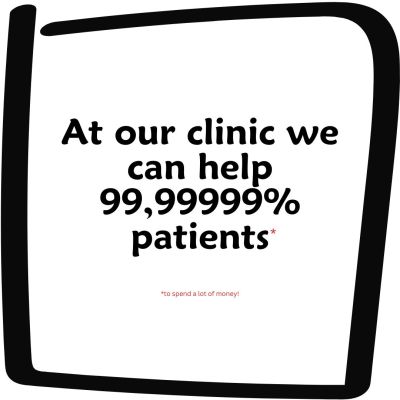SUCCESS RATES
It's JUST a number!

Let’s talk about numbers. If you’ve been in the IVF game for any length of time, you’ve likely noticed how much emphasis is placed on success rates. Fifteen years ago, the term "success rate" wasn’t even on our radar. Clinics would provide this information on request or perhaps mention it during an initial consultation. Fast forward to today, and it's almost as if success rates have become a marketing tool in their own right. The way these numbers are presented can be confusing, sometimes intentionally so. Even a skilled linguist could get lost in the complex language of a clinic’s success rate claim.
"We’ve helped over 90% of our patients grow their families and enjoy life!"
"99% of couples get pregnant after just 4 IVF cycles with us."
"With a customized treatment program, experienced embryologists, our own donor program, and innovative procedures, we can help up to 90% of couples."
"Out of 3 complete cycles of donor egg therapy, the success rate is 96.5%.”
On the surface, these statements sound impressive, right? But dig a little deeper, and you’ll see that they leave a lot of questions unanswered. First, if you follow that “99% success rate” claim, you're essentially looking at 4 full IVF cycles—which could mean anywhere between 4 to 10 embryo transfers. How many couples actually make it to the fourth cycle? And even if you do, what are your odds of success after multiple transfers?
Then there’s the age factor, which is often glossed over. Are these success rates for women in their 20s or 30s, or do they also apply to women in their 40s? Are you using your own eggs, or are you opting for donated eggs? What about sperm quality? These are critical factors that can drastically alter the success rate of IVF.
And let’s not forget about the emotional and financial toll. 10 embryo transfers? For many couples, that’s simply not feasible, either because of emotional strain or the cost involved.
So, what’s a realistic success rate for the average person who can only afford a few IVF cycles? It’s often stated that the success rate for a single transfer is about 30%. But here's a key point: that’s pregnancies, not live births. The goal isn’t just to see a positive test result—it’s to have a healthy baby at the end of the journey. The term "success rate" is really just a number. Ideally, this number should reflect the reality of your personal chances, and you’ll only know that after a thorough consultation with your doctor, who takes into account all your specific circumstances and test results.
To be clear, clinics aren’t entirely to blame for the confusion. They operate with the patients they get, and they can’t control what conditions or challenges the patients bring to the table. For example, if a clinic specializes in treating younger women with minimal health complications, their success rate will naturally be higher than a clinic that handles complex cases, like women with endometriosis or low ovarian reserve.
If success rates were made public, there's a risk that clinics might start turning away more complicated patients in order to protect their numbers. Could you be one of those patients who is rejected? It's a chilling thought, and it highlights the delicate balance clinics have to maintain.
So, before we start scrutinizing clinics based solely on their success rate, we need to turn the lens inward and consider our own individual chances. A good clinic’s primary goal is to maximize your personal chances of success—whether that's a 10% chance or a 20%, or if you're fortunate and get pregnant within 1st cycle.
At the end of the day, let's take these success rates with a pinch of salt. They’re often necessary for the clinic's marketing, but they shouldn’t be the only number you focus on. The most important number is the one that reflects your chances of having a successful pregnancy and ultimately holding a healthy baby in your arms. That’s the real measure of success.
Book your expert consultation now!
I offer an initial consultation into the world of IVF to anyone who needs help choosing a clinic, explaining the procedure, success rates, ethical issues, timeline and finances.